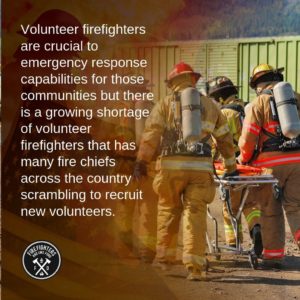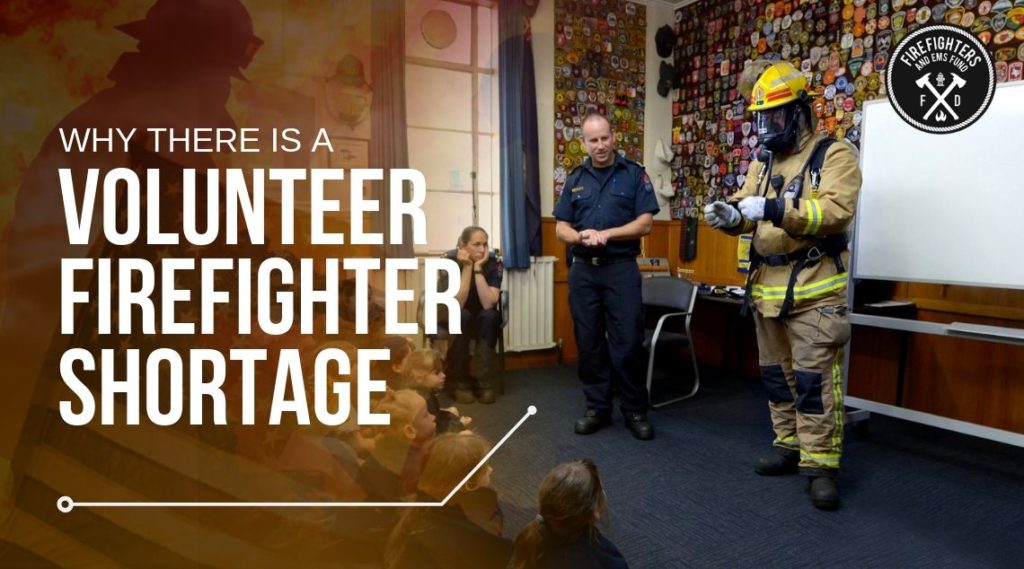Nearly 7 in 10 firefighters in the United States are volunteer firefighters. If you live in almost any small town in America, your local fire department is more than likely staffed with volunteers. Volunteer firefighters are crucial to emergency response capabilities for those communities but there is a growing shortage of volunteer firefighters that has many fire chiefs across the country scrambling to recruit new volunteers. So why is there a growing shortage of volunteer firefighters in the United States and what are local fire departments doing to combat the shortage. Here are some facts on the growing volunteer firefighter shortage in the United States.
A shrinking (and aging) pool of volunteers
The major contributing factor to the volunteer firefighter shortage is quite simple. It is hard to recruit candidates when the job will inevitably not pay them what their work is worth. Most volunteer firefighters have full-time jobs, so the idea of taking on another full-time job with little to no pay is a hurdle volunteer fire departments have had to deal with for years.

Other reasons for the shortage aren’t as obvious but illustrate how the fire service profession has evolved over the last few decades. Today, firefighters respond to more medical calls for service than any other emergency call. The allure of being a volunteer firefighter may lose its luster as candidates realize that the job may be far less exciting than they imagined. Furthermore, the requirements to become a firefighter have become tougher and requires a major commitment of time for training.
Fire departments also face problems recruiting young people to become volunteer firefighters. Volunteer fire departments are aging, making them less and less capable to respond to emergencies. In Pennsylvania, Mt. Lebanon fire chief Nick Sohyda describes the problem he faces. “In most communities, we’re not recruiting a lot of young people,” says Sohyda. “And so what you get is three 65-year-old men showing up on a fire truck and you think you have a fire department.”
Solving the volunteer firefighter shortage
Some communities have taken the volunteer firefighter shortage head-on by offering incentives to attract new recruits. In Montgomery County, Maryland, for example, the number of volunteer firefighters has stayed fairly steady over the years, a credit to the incentives they offer recruits. They use grant money and state aid to offer volunteer firefighters a monthly retirement payout and a $6,500 income tax credit for volunteer firefighters. In Pennsylvania, state leaders are studying other options to incentivize volunteer firefighter recruits. Their ideas include tuition reimbursement, removing regulatory barriers that make it difficult to become a volunteer firefighter, and offering incentives to employers who let their workers leave early to serve in their local department.
In the last few decades, the number of firefighters, both paid and volunteers, has decreased by over 5%, but the number of volunteer firefighters has dropped more dramatically. Communities across the country will have to get creative if they want to keep their local fire departments staffed and ready to respond.
In the study conducted of 62 referendums, primarily in California, Colorado, and Illinois, we found that the majority of the measures presented passed. However, some measures saw a higher level of pushback. Interestingly, the category that saw the most voter resistance was that of the idea of new fire stations. Why, then, are voters seemingly more resistant to this type of measures? Find out here.








